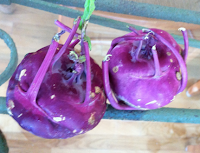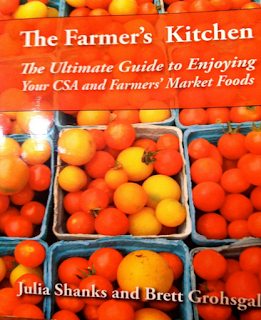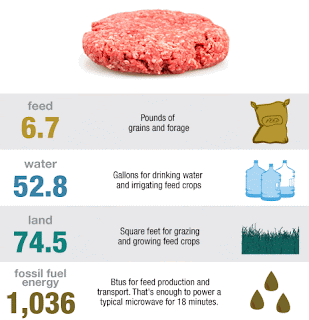By Susan Tamoney
Our latest guest blogger, Susan Tamoney, is an active member of the Boston Oxfam Action Corps as well as a member of a local CSA! In the following series of posts, Sue will share a look at the rich variety of local options and how she has chosen to play a larger part in her own food. Below, Susan shares her tips and tricks to following the GROW Method with her CSA produce, not to mention some delicious recipes with some unlikely vegetables.
- - -
For me, the happiest day of the week is Tuesday. This is the day that I pick up our CSA share at
Land’s Sake Farm. For anyone who doesn’t know, purchasing a Community Supported Agriculture (CSA) share allows small scale farmers to plan their growing season more efficiently by having shareholders pay for their entire season of produce up front, in advance of the growing season. Supporting and connecting with local farmers is one important part of Oxfam America’s
GROW Method initiative in support of the
GROW campaign.
But back to my happiest day of the week. It wasn’t always this way. Don’t misunderstand; it’s easy to look forward to going to the farm to pick up your CSA. The beautifully organized tables with baskets of produce spilling over their edges. The just harvested vegetables, practically crying out for their moment in the spotlight, begging to be photographed. The sunburned, enthusiastic farmers, proudly explaining what produce is in our share this week. The friendly neighbors exchanging recipes and making cooking suggestions. What’s not to love?
All of this against a backdrop of neatly tended rows of vegetables and colorful fields of flowers is pretty hard to resist. Toss in a bit of happy background noise as children, arriving with their parents, take off laughing to check out a fluffy farm rabbit and some elegant chickens clucking softly in their coop.
What’s not to love?
Like many, we’ve always done a bit of backyard gardening at our house. The easy stuff: tomatoes, peas, a bit of bib lettuce, some basil. It was enough to toss together an impromptu Insalata Caprese. We’ve always sought out produce from small local farms and farmer’s markets. But this year, inspired by Oxfam and GROW, we decided that it was time to step up and commit to a CSA share all our own.
So, here’s a picture of our share for one week:
Looks like a good amount of produce for a two to four person family, right? Surprisingly, I found that there was a bit of stress involved. When I first start buying produce this way, I felt a bit overwhelmed by what I brought home in my bags, which can vary greatly for week to week. The good news is that with a bit of advance preparation and a tiny bit of practice, it was all very doable.
Be advised, if you, like me, have ever felt guilty at having to pitch into the compost (or even worse, into the trash) a head of lettuce that wilted before it made it into your salad or the zucchini that was in the back of the vegetable drawer and is now beyond salvation, even for soup, this feeling of guilt will be even worse when something from a CSA ends up in the bin. Not sure exactly why, but it definitely is. Maybe it’s picturing the sweat streaked faces of your farmers, all of whom you are on a first name basis with by the middle of the summer.
So, I decided early on in the season to make a kind of challenge of it.
The challenge:
- Use only what we get in our share, no running out to Whole Foods to buy what we might “feel” like having for dinner tonight,
- Use everything in the share, even the things that we don’t have a clue what they are (“Oh, so that’s a kohlrabi.”),
- If we absolutely can’t eat something, share it with friends or neighbors.

These are kohlrabi. I’ve already removed the leaves. Aren’t they a beautiful color? They transform into beautiful chips with a purpled ruffled edge, very Prada!
The great news is that we did it! And not only that but I can say with complete honesty that we have never eaten better than we did this summer. We had some truly amazing meals, and they were all simple and delicious and healthy and VERY easy to prepare. It took a bit of experimentation and “tweeking”, but by end of the season, I’d finally got it down. Supporting lots of parts of the GROW Method in the process and eating some amazingly delicious food. Now that REALLY makes me happy!
Kohlrabi Chip Recipe:
- Wash and dry one or two kohlrabi.
- Thinly slice them into discs using a mandolin (careful of your fingers!).
- Put the slices into a bowl and toss them lightly with a little olive oil, just to coat.
- Place them in a single layer on parchment (very important) covered cookie sheets and bake in a 425F oven for about 5 minutes. You should keep an eye on them. Keep them in longer if you like them crispier.
I made these a lot this summer because they are great to serve as a little nibble before dinner or on the side with an entrée and because everyone loved them. So, I hit on a sweet and salty version that I liked even better:
- After tossing the kohlrabi slices with olive oil, sprinkle them with some coarse salt, some ground cinnamon and a bit of granulated sugar.
- Keep a close eye on them while they’re in the oven, they can burn quickly with the added bit of sugar.
Hope you like these as much as we all did! Kohlrabi got the prize in our house for “Vegetable That We Never Would Have Tried Without A CSA” and now it’s a hands down favorite!
- - -
Susan introduced us to what her CSA looks like and what her challenges were in using up all of her delicious produce! Next she'll reveal her best tips and tricks for getting the most out of a CSA! And of course more great recipes!
Have your own tips and tricks? What about favorite recipes for our lesser - known veggies? Email them in to actioncorps@oxfamamerica.org!

































